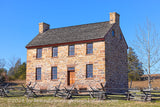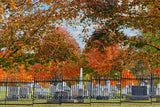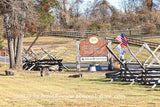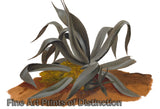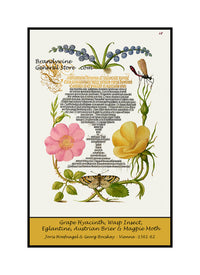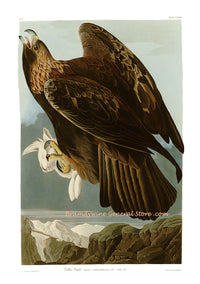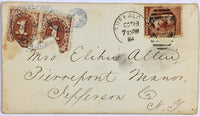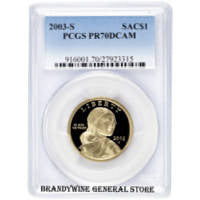Booby Gannet by John James Audubon art print
An archival premium Quality art Print of the Booby Gannet by John James Audubon for sale by Brandywine General Store. In this painting Mr. Audubon shows a lone specimen of this water bird which is perched upon a dead log in the middle of a bay of water. In the background is an island with a small village visible, this is probably located somewhere in the Tortugas. The Booby Gannet was plate or picture number 207 in the first Havell edition of the great ornithology book The Birds of America which was published in the 1830s and included pictures and descriptions of all the birds that were known by Mr. Audubon in America at that time.
Sula Fusca - Mr Audubon describes the Booby Gannet thus in Birds of America: About eight miles to the north-east of the Tortugas lighthouse, lies a small sand-bar a few acres in extent, called Booby Island, on account of the number of birds of this species that resort to it during the breeding-season, and to it we accordingly went. We found it not more than a few feet above the surface of the water, but covered with Boobies, which lay basking in the sunshine, and pluming themselves. Our attempt to land on the island before the birds should fly off, proved futile, for before we were within fifty yards of it, they had all betaken themselves to flight, and were dispersing in various directions. We landed, however, distributed ourselves in different parts, and sent the boat to some distance, the pilot assuring us that the birds would return. And so it happened. As they approached, we laid ourselves as flat as possible in the sand, and although none of them alighted, we attained our object, for in a couple of hours we procured thirty individuals of both sexes and of different ages, finding little difficulty in bringing them down as they flew over us at a moderate height. The wounded birds that fell on the ground made immediately for the water, moving with more ease than I had expected from the accounts usually given of the awkward motions of these birds on the land. Those which reached the water swam off with great buoyancy, and with such rapidity, that it took much rowing to secure some of them, while most of those that fell directly into the sea with only a wing broken, escaped. The island was covered with their dung, the odour of which extended to a considerable distance leeward. In the evening of the same day we landed on another island, named after the Noddy, and thickly covered with bushes and low trees, to which thousands of that species of Tern resort for the purpose of breeding. There also we found a great number of Boobies. They were perched on the top branches of the trees, on which they had nests, and here again we obtained as many as we desired. They flew close over our heads, eyeing us with dismay but in silence; indeed, not one of these birds ever emitted a cry, except at the moment when they rose from their perches or from the sand. Their note is harsh and guttural, somewhat like that of a strangled pig, and resembling the syllables hork, hork.
The nest of the Booby is placed on the top of a bush at a height of from four to ten feet. It is large and flat, formed of a few dry sticks, covered and matted with sea-weeds in great quantity. I have no doubt that they return to the same nest many years in succession, and repair it as occasion requires. In all the nests which I examined, only one egg was found, and as most of the birds were sitting, and some of the eggs had the chick nearly ready for exclusion, it is probable that these birds raise only a single young one, like the Common Gannet or Solan Goose. The egg is of a dull white colour, without spots, and about the size of that of a common hen, but more elongated, being 2 3/8 inches in length, with a diameter of 1 3/4. In some nests they were covered with filth from the parent bird, in the manner of the Florida Cormorant. The young, which had an uncouth appearance, were covered with down; the bill and feet of a deep livid blue or indigo colour. On being touched, they emitted no cry, but turned away their heads at every trial. A great quantity of fish lay beneath the trees in a state of putrefaction, proving how abundantly the young birds were supplied by their parents. Indeed, while we were on Noddy Island, there was a constant succession of birds coming in from the sea with food for their young, consisting chiefly of flying-fish and small mullets, which they disgorged in a half macerated state into the open throats of their offspring. Unfortunately the time afforded me on that coast was not sufficient to enable me to trace the progress of their growth. I observed, however, that none of the birds which were still brown had nests, and that they roosted apart, particularly on Booby Island, where also many barren ones usually resorted, to lie on the sand and bask in the sun.
The flight of the Booby is graceful and extremely protracted. They pass swiftly at a height of from twenty yards to a foot or two from the surface, often following the troughs of the waves to a considerable distance, their wings extended at right angles to the body; then, without any apparent effort, raising themselves and allowing the rolling waters to break beneath them, when they tack about, and sweep along in a contrary direction in search of food, much in the manner of the true Petrels. Now, if you follow an individual, you see that it suddenly stops short, plunges headlong into the water, pierces with its powerful beak and secures a fish, emerges again with inconceivable ease, after a short interval rises on wing, performs a few wide circlings, and makes off toward some shore. At this time its flight is different, being performed by flappings for twenty or thirty paces, with alternate sailings of more than double that space. When overloaded with food, they alight on the water, where, if undisturbed, they appear to remain for hours at a time, probably until digestion has afforded them relief.
The range to which this species confines itself along our coast, seldom extends beyond Cape Hatteras to the eastward, but they become more and more numerous the farther south we proceed. They breed abundantly on all such islands or keys as are adapted for the purpose, on the southern and western coasts of the Floridas and in the Gulf of Mexico, where I was told they breed on the sand-bars. Their power of wing seems sufficient to enable them to brave the tempest, while during a continuance of fair weather they venture to a great distance seaward, and I have seen them fully 200 miles from land.
The expansibility of the gullet of this species enables it to swallow fishes of considerable size, and on such occasions their mouth seems to spread to an unusual width. In the throats of several individuals that were shot as they were returning to their nests, I found mullets measuring seven or eight inches, that must have weighed fully half a pound. Their body, beneath the skin, is covered with numerous air-cells, which probably assist them in raising or lowering themselves while on wing, and perhaps still more so when on the point of performing the rapid plunge by which they secure their prey. Audubon bird print #207



